Nissan Rogue Vs Murano: Which SUV is Right for You?

Nissan showrooms are awash with crossover-type vehicles, ranging from the diminutive Kicks all the way up to the dreadnought-class Armada.
Sitting roughly in the center of all that activity is a pair of unibody machines, the Rogue and Murano, both of which are available with all-wheel drive.
The company has found success with the Rogue thanks to its smart packaging and attractive price. Touches like rear side doors that open nearly 90 degrees for easy access to the back seat (great for parents buckling in little ones) make it popular with families.
Get a Quote on a New Nissan Rogue or MuranoA step up the Nissan ladder in terms of exterior size and sticker price is the Murano. Last freshened for the 2019 model year, this rig offers snappy styling and a palette of bold colors. It seeks to capture customers who are looking for a well-equipped and spacious rig that won’t break the bank.
Nissan Rogue vs Murano
Cabin Space
Rogue: Volume of the passenger compartment in the smaller of these two machines measures 105.4 cubic feet. Headroom up front is an agreeable 41.1 inches, but note that the addition of a moonroof carves 1.9 inches from that quota, more than enough to be noticed by tall drivers. Headroom in the back shrinks to 39.2 inches thanks to a slightly sloping roofline – and yes, the glass roof option eats around an inch and a half back here, too. The Rogue used to be available with a third row, but that option has been discontinued. If you need the way-back, why not look at the Mitsubishi Outlander, which shares the same platform?
Murano: Perhaps unsurprisingly given the fact it is several inches longer than the Rogue, the larger Nissan boasts more usable space—but not by much. Hip and shoulder room is better, but the Rogue out-stretches its big brother by nearly three inches up front. Second-row legroom is essentially a wash. Front headroom is surprisingly slightly less than the Rogue, with or without the glass roof. Rear seat passengers will be able to wear their hair a bit taller in the Murano, however. The Murano is only available with two rows of seats.
ALSO SEE: Nissan Altima vs Maxima: Which Sedan is Right For You?Bottom Line: As is often the case when a smaller model gets a refresh, the results here are a lot closer than you might think. The Murano still gets the nod, especially in hip and shoulder room, but it’s not a runaway victory.
Cargo Capacity
Rogue: With the second row of seats folded down, Rogue is good for an even 74.1 cubic feet of cargo space. Flipped up and ready to accept three passengers abreast, a total of 36.5 cubes is yours for the taking behind the rear seat. The Rogue also has a “Divide and Hide” cargo system with a hidden underfloor storage compartment and the ability to set up a shelf in the trunk to keep your things separate or hide them under the shelf.
Murano: Cargo space in the Murano with all five seats deployed is 32.1 cubic feet, a measure that grows to 67.0 cubes with the rear seat folded flat. Total interior volume is 140.2 cubic feet, 6.2 more than the Rogue. It is important to note that the optional moonroof intrudes into this number significantly, bringing it down to just 133.9 cubic feet.
Bottom Line: Alert readers will note that the dimensionally smaller Rogue somehow manages to best the Murano in cargo carrying capacity. Blame a combination of the Murano’s slinkier styling choices and greater emphasis on carrying passengers in stretch-‘em-out comfort. Both vehicles are available with motion-activated liftgates.
ALSO SEE: Ford Edge vs Explorer: Which SUV is Right for You?Technology
Rogue: With the latest generation of the Rogue, Nissan is throwing darn near everything it has at its best-seller. Every trim other than the base S features the ProPilot Assist suite of tech, designed to ease driver workload. When clear lane markings are detected, steering assists will engage along with adaptive cruise control. Utilizing a network of cameras, sensors, and radar, ProPilot assist can be a boon to those who frequently face heavy freeway traffic during their morning commute. Apple CarPlay and Android Auto are also standard, with the former going wireless on higher trims.
Murano: In spite of being more expensive, Murano makes do with a more traditional set of driver assists. Lane departure warnings, traffic sign recognition, rear cross traffic alert, blind spot monitoring, high beam assist, and automatic emergency braking (front and rear) all conspire to help give the driver the information they need to stay safely on the straight and narrow. Apple CarPlay and Android Auto are also available.
Bottom Line: Without a doubt, the Rogue wins this round thanks to the availability of Nissan’s ProPilot Assist system. Rogue was the first of two Nissan vehicles (the other being the all-electric Leaf) to offer the system, easing driver workload by reducing the amount of acceleration, steering, and braking input under certain driving conditions. Presumably, Nissan is working on developing the tech for its more expensive cars like the Murano.
Powertrains
Rogue: Nissan makes decision time easy in the Rogue by offering a single powertrain: a 2.5-liter inline-four producing 181 horsepower and roughly an equal amount of torque. Its transmission type is a CVT, programmed here with Sport and Eco modes. The Rogue’s engine will happily operate on cheap 87-octane swill.
ALSO SEE: CVT Transmission Pros and ConsMurano: A single engine is available in the Nissan Murano, appearing in the form of Nissan’s ubiquitous 3.5-liter V6 engine, making 260 horses and 240 lb-ft of torque. It is lashed, as are most Nissan products these days, to a continuously variable transmission bearing the name Xtronic. Like a pair of well-behaved brothers, both the front- and all-wheel drive variants share just about all their underpinnings.
Bottom Line: It is tough to go wrong with either of these tried-and-true powertrains. Neither is going to set the heart of any gearhead aflutter but they will serve as reliable and largely invisible methods of propelling either car to soccer practice.
ALSO SEE: Toyota Highlander vs 4Runner: Which SUV is Right for You?Fuel Economy
Rogue: Thanks to all-wheel drive componentry adding a higher percentage of total weight compared to the heavier Murano, the Rogue receives four separate fuel economy estimates from the EPA. Front-wheel drive units Rogue S models post 27 mpg in the city and 35 mpg highway, for an even 30 mpg average. Opt for any of the higher trims and you drop 1 mpg on every measure.
AWD Rogue S models are rated at 26/33/29 mpg, respectively. Just like the front-drive models, selecting a higher trim shaves a single mpg on each.
Murano: That both front- and all-wheel-drive versions of the Murano are rated with exactly the same fuel economy numbers tells you all you need to know about the efficiency a continuously variable transmission brings to the party. The EPA estimates this rig will return 20 mpg in city driving and 28 mpg on the highway. The Murano is not available as a hybrid.
Bottom Line: Physics wins, as it always does. The Murano outweighs the Rogue by a consistent 500 lb when comparable trims are paralleled, meaning the larger machine has to push more weight through the wind. Customers keeping an eye on their fuel bill should consider the Rogue.
Capability
Style
Rogue: Nissan has gifted the latest Rogue with a much more assertive look than the last model. It’s chunky and angular, drawing a lot of inspiration from the big Armada. Think of it as the vehicular equivalent of the handsome but unassuming father who stoically goes about the business of raising his family without making a fuss or calling attention to himself.
Murano: Mildly refreshed for 2019, the Murano deploys Nissan’s corporate face more aggressively than its little Rogue brother. A pair of dramatic headlights feature LED flourishes that are upswept like JR Ewing’s eyebrows. Nissan loves to design a “floating roof” into its vehicles, emphasized here with two horizontal slashes of chrome on the d-pillar.
Bottom Line: Styling is always the most subjective of measures, but this jaundiced eye believes the Murano to cut a sharp figure in any of its four trim levels. The Rogue, even with the new shape, can give off some rental car vibes in lower trims, but looks especially smart in high-zoot form.
ALSO SEE: Subaru Outback vs Forester: Which Subaru Crossover Is Right for You?
Pricing
Rogue: Front-wheel drive models in base S trim are attractively priced at just $26,900, including destination. Popping for the more lavishly equipped SV and SL versions will set customers back $28,590 and $33,250 respectively. Adding all-wheel drive is a $1,400 proposition no matter where you land on the Rogue totem pole. At the very top of the lineup is the AWD Platinum, at $38,080.
Murano: Sending power to just two wheels, a front-drive Murano S basically picks up near the top of the Rogue lineup, starting at $33,660. Trim levels are the familiar SV and SL for $36,790 and $41,160, plus a top-spec Platinum model for a heady $45,210. All-wheel drive adds $1,550 to any trim.
Bottom Line: Compared to their competitors, both the Rogue and Murano are very competitively priced. If outright space ranks high on one’s shopping list, consider the base Murano instead of an opulently-spec’d Rogue. The larger car is hardly a penalty box, and you’ll get a lot more room for your hard earned dollar.
The Verdict: Nissan Rogue vs Murano
Unless one absolutely needs the extra passenger space afforded by the Murano, it behooves the smart shopper to take a close look at the Rogue. Its cargo carrying capacity surpasses its bigger brother thanks to more practical (if slightly boring) styling cues, and the availability of ProPilot Assist is a big plus. Combines with a lower price and more ground clearance, the Rogue makes an excellent case for itself in this battle royale.
Discuss this article on our Nissan Murano Forum

Living in rural Canada, Matthew has immersed himself in car culture for over 30 years and relishes the thought of a good road trip. A certified gearhead, he enjoys sharing his excitement about cars and is very pleased to contribute at AutoGuide. Matthew is a member of Automotive Journalists Association of Canada (AJAC).
More by Matthew Guy





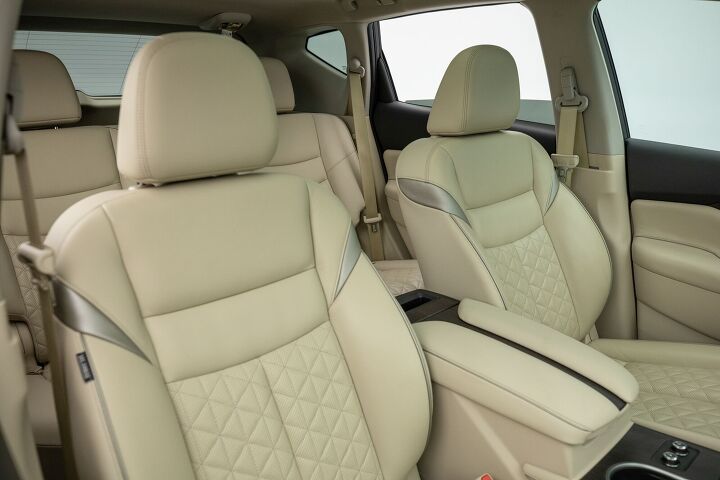























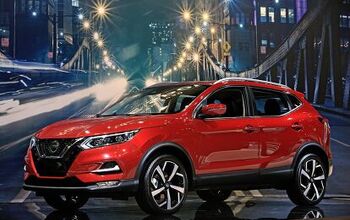



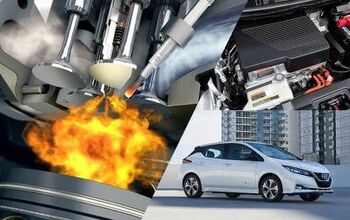
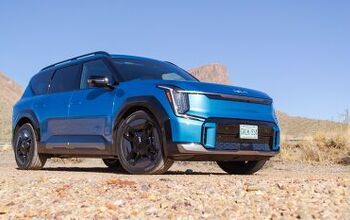
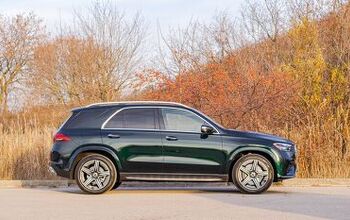


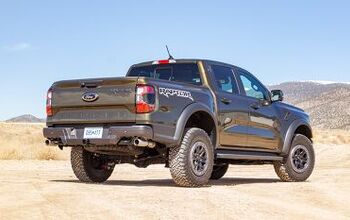

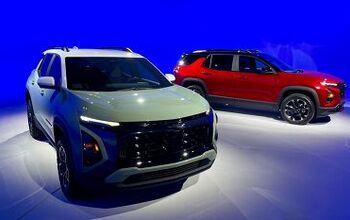


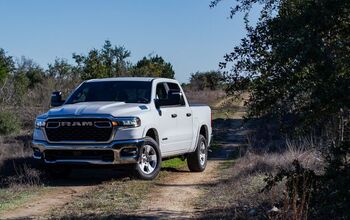
Comments
Join the conversation
Why do Nissan dealers prefer to lease a Murano over the Rogue? I'm being told it's a better deal for me by the salesman. I've leased 2 Rogues since '17. Like them, and I hear the '23, 3 cyl with turbo is nice...and I like the fuel efficiency. Why would the dealer now be urging me towards the Murano? I don't like it as well. Gotta be a reason in their favor, and as I said, they're telling me the $ end of it is better for me.